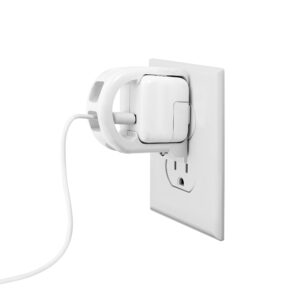As someone who has written about health IT and EHR for 18 years, I like to think there’s nothing about health IT that I haven’t written about. Plus, it’s fun to look back at how we covered the launch of the iPad and how that could be leveraged in healthcare. It’s been a few years since I’ve written about iPads in healthcare because tablets are now just a standard solution that’s integrated into the workflow and replacement lifecycle at healthcare organizations.
With that said, it is amazing to see how many tablets there are in healthcare. Whether it’s used at the front desk to handle check-ins or used by the nursing staff to document the patient visit or used by the doctor to document their findings, tablets are all over healthcare. One challenge with all of these tablets and cell phones is that you have to regularly plug them in to make sure they’re charged. There’s nothing worse for a nurse or doctor than to have to search for a charged device to be able to help the patient.
One problem with having to charge these tablets is that iPad plugs like to grow legs and walk away. While I’d love to assume that most iPad charging cables are just being misplaced, it’s more likely that patients and staff are taking these cables. As someone with multiple children, I know how valuable a few extra power cables can be.
 The good news is that there’s a solution to this problem called Lock Socket. It’s really a quite simple solution to the problem. The Lock Socket is just screwed into the plug and “locks” your charging cable to the plug. Not only does this lock your charging cable in place so it can’t be taken, it also protects the charging cable from bending and breaking which we all know is a common problem with these charging cables. Especially cables that are used as much as they are in healthcare.
The good news is that there’s a solution to this problem called Lock Socket. It’s really a quite simple solution to the problem. The Lock Socket is just screwed into the plug and “locks” your charging cable to the plug. Not only does this lock your charging cable in place so it can’t be taken, it also protects the charging cable from bending and breaking which we all know is a common problem with these charging cables. Especially cables that are used as much as they are in healthcare.
Lock Socket has created different versions for iPads, iPhones, and Samsung chargers. That includes the standard iPhone charger and the iPhone fast charger which come in different form factors.
When you’re a hospital or health system that has literally thousands of iPhones and iPads, losing charging cables becomes a real cost to your organization. The Lock Socket can help you save on those costs. However, more important than the cost, there’s a real patient experience and provider burnout aspect to this as well. As I mentioned, not being able to have a charged device causes burnout for your staff which trickles down and can impact the patient experience.
There’s a patient experience piece to this too. We all know that being able to charge our cell phones is the life blood of our connectivity to the outside world when we’re in the hospital. I know this because last night my brother-in-law was sitting in his truck charging his phone while a family member was in the hospital. I imagine the hospital didn’t have charging cables because they thought (appropriately) that they’d walk off. Lock Socket allows a hospital to provide not just a plug, but a charging cable to patients and their families who need to charge their phone during the visit.
While you can buy the Lock Socket on Amazon, they also offer bulk discounts for healthcare organizations that want to buy a large number of Lock Sockets.
What do you think of this solution? Do you have this problem in your organization? Have you come up with creative solutions to this problem? Let us know your thoughts in the comments and on social media.













